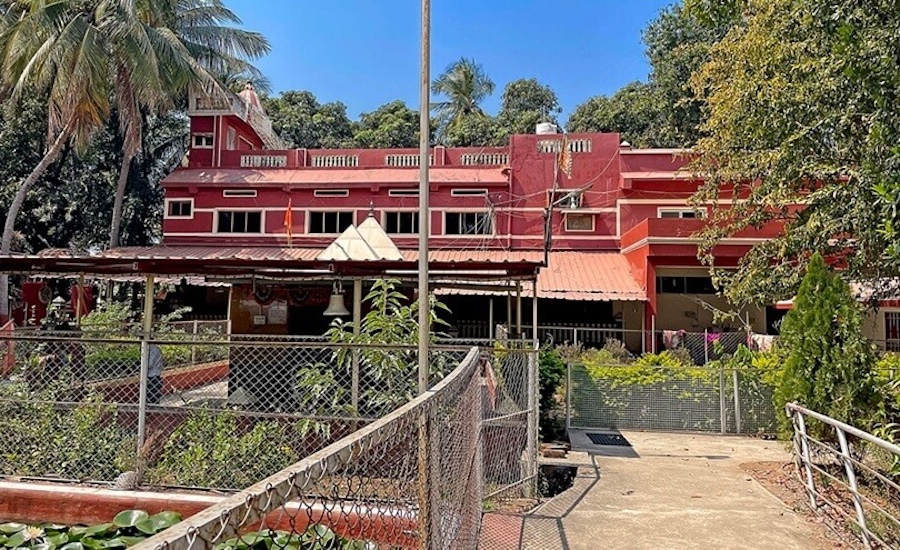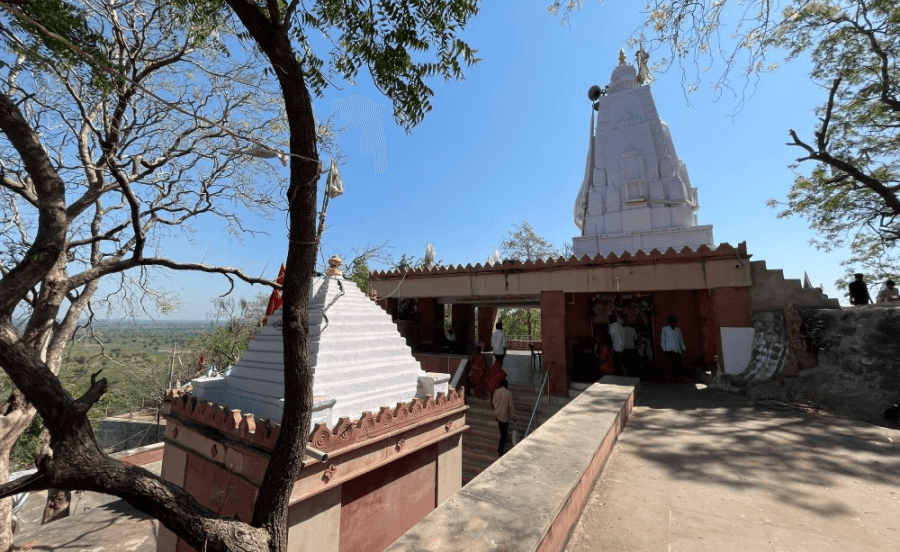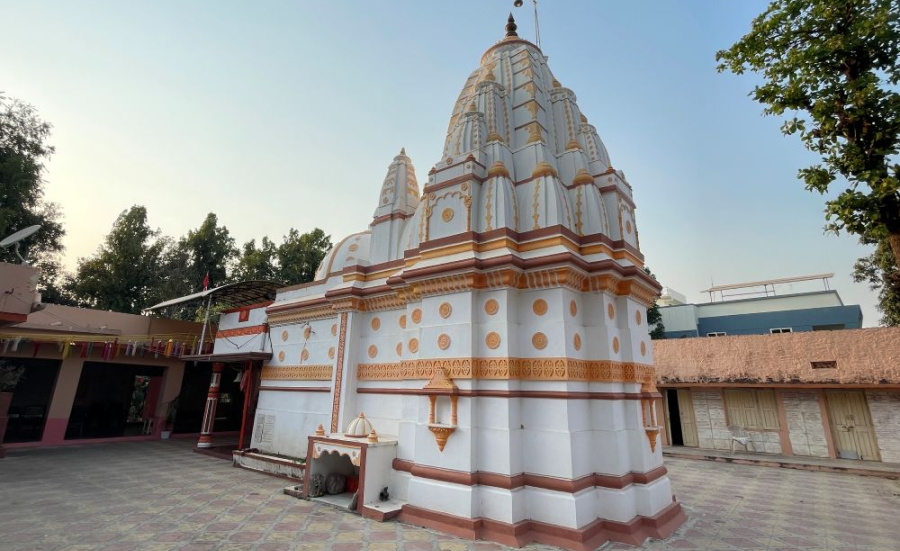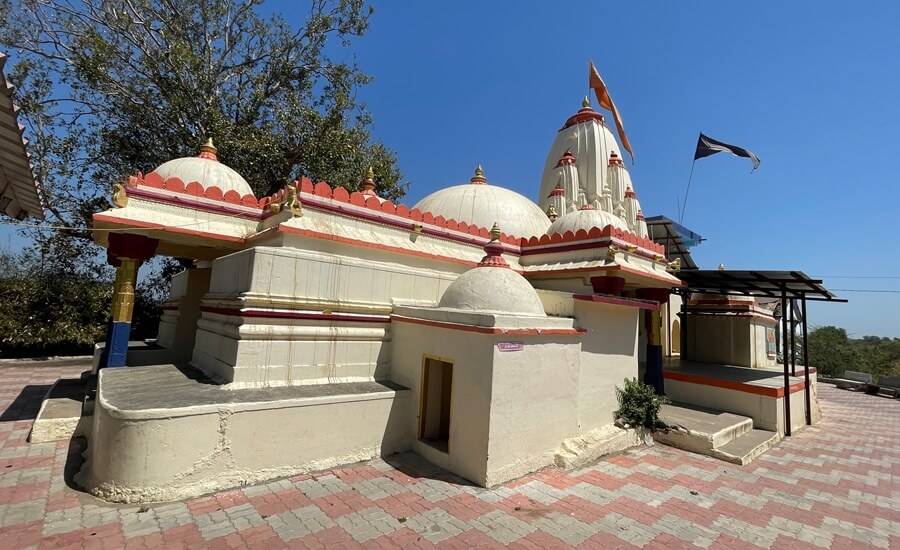
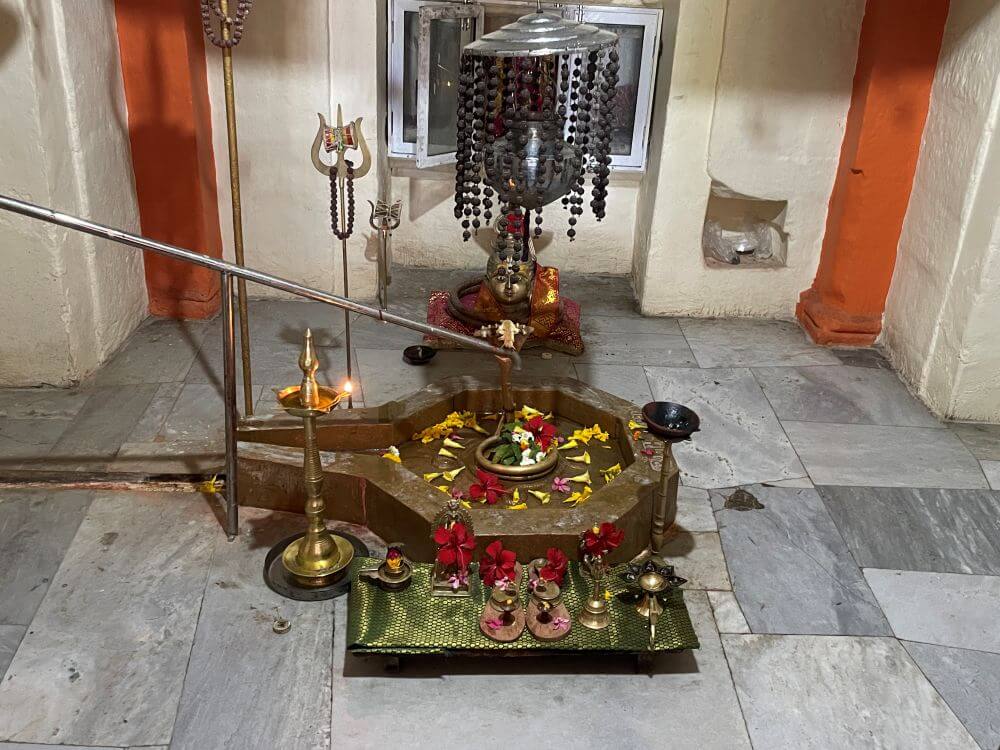
Located near Jior-Pati village on the southern bank of the Narmada River, the ancient Kumbheshwar Tirth is renowned as a sacred site of various gods, sages, and saints. This self-manifested (Swayambhu) Mahadev emerged from the pitcher (Kumbha) held by Sage Markandeya. Legend narrates that Shani performed penance here for five thousand years to calm his anger. Devotees believe bathing at Kumbheshwar Tirth yields the merits equivalent to a thousand years of residence in Kashi, and a mere sight of Mahadev here grants the spiritual benefits of attending the Nashik Kumbh Mela. The site is also famous for its Narmadeshwar Lakshmi Yantra temple.
According to legend, Sage Markandeya, a descendant of 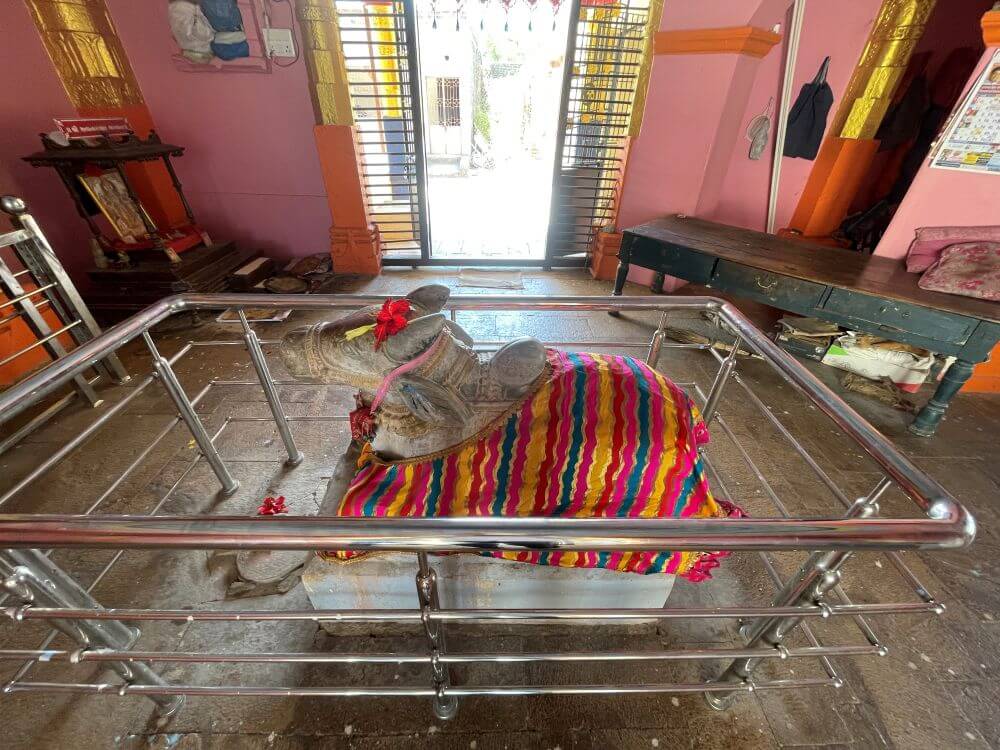 Sage Bhargava, was the son of Sage Mrikand and his wife Manasvini. He attained longevity through worshiping Shiva and mastering the Mahamrityunjaya mantra. The Markandeya Purana, one of the eighteen Mahapuranas, is attributed to him. Once, he brought water from 64 holy places in a clay pot to this site. As he held it, the pot spontaneously broke, revealing Shiva Shankar. Markandeya requested Shiva Shankar to grant that anyone who serves sincerely at this sacred site will have all their sorrows removed and wishes fulfilled. Shiva Shankar disappeared after saying “Tathastu” (So be it). Since he emerged from a pot (kumbha), this place became known as Kumbheshwar Mahadev Tirtha.
Sage Bhargava, was the son of Sage Mrikand and his wife Manasvini. He attained longevity through worshiping Shiva and mastering the Mahamrityunjaya mantra. The Markandeya Purana, one of the eighteen Mahapuranas, is attributed to him. Once, he brought water from 64 holy places in a clay pot to this site. As he held it, the pot spontaneously broke, revealing Shiva Shankar. Markandeya requested Shiva Shankar to grant that anyone who serves sincerely at this sacred site will have all their sorrows removed and wishes fulfilled. Shiva Shankar disappeared after saying “Tathastu” (So be it). Since he emerged from a pot (kumbha), this place became known as Kumbheshwar Mahadev Tirtha.
It is also called Brahmeshwar Mahadev Temple because Lord Brahma conducted penance here to please Shiva. 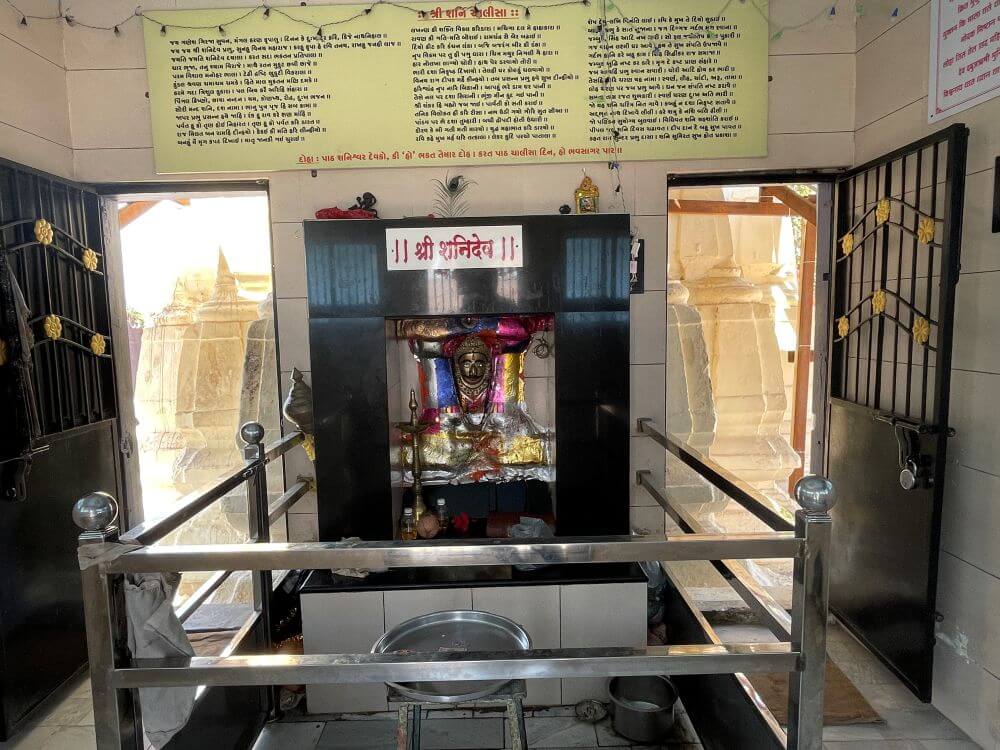 The legend regarding Shani’s penance states that Shiva entrusted Shani with keeping track of all living beings’ sins and virtues. While doing so, Shani became angry and requested Shiva for a way to calm himself. Shiva instructed him to go to a place known as Kumbhivan on the banks of the Narmada River and meditate for five thousand years to pacify his anger. Following this guidance, Shani meditated here, and his anger eventually subsided. During Shani’s penance, his wives Nani Panauti and Moti Panauti also came here; they are considered embodiments of Shani’s power. It is said that Rahu also came here to meditate after Shani. Other deities, including Brahma, Vishnu, Indra, Varuna, and Yama, are also said to have meditated here.
The legend regarding Shani’s penance states that Shiva entrusted Shani with keeping track of all living beings’ sins and virtues. While doing so, Shani became angry and requested Shiva for a way to calm himself. Shiva instructed him to go to a place known as Kumbhivan on the banks of the Narmada River and meditate for five thousand years to pacify his anger. Following this guidance, Shani meditated here, and his anger eventually subsided. During Shani’s penance, his wives Nani Panauti and Moti Panauti also came here; they are considered embodiments of Shani’s power. It is said that Rahu also came here to meditate after Shani. Other deities, including Brahma, Vishnu, Indra, Varuna, and Yama, are also said to have meditated here.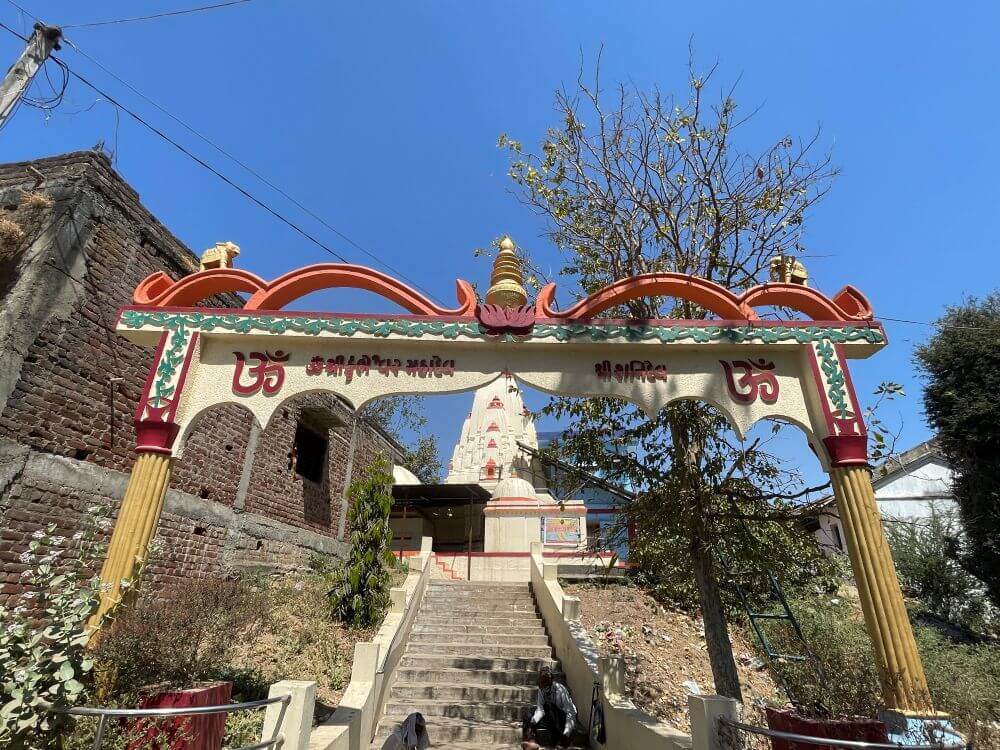
The Kumbheshwar temple area is calm and serene. There are some shops selling flowers and prasad (offerings) within the temple area. The temple stands on a raised platform with an impressive spire. The temples dedicated to Kumbheshwar Mahadev and Shani-Nani-Moti Mata are adjacent. Kumbheshwar temple comprises Darshan Mandap, Sabha Mandap, Antarala, and Garbhagriha (sanctum). On the left of Darshan Mandap are idols of Ganesh and Hanuman. Sabha Mandap houses a Nandi statue and a dome decorated with images of deities. Inside Sabha Mandap is the Chakreshwar Mahadev Shivaling accompanied by another Nandi idol and two serpent sculptures. Panchkuber Shivaling is also placed here. A small niche near Garbhagriha contains Vishnu’s image, and exquisite carvings adorn the sanctum entrance. 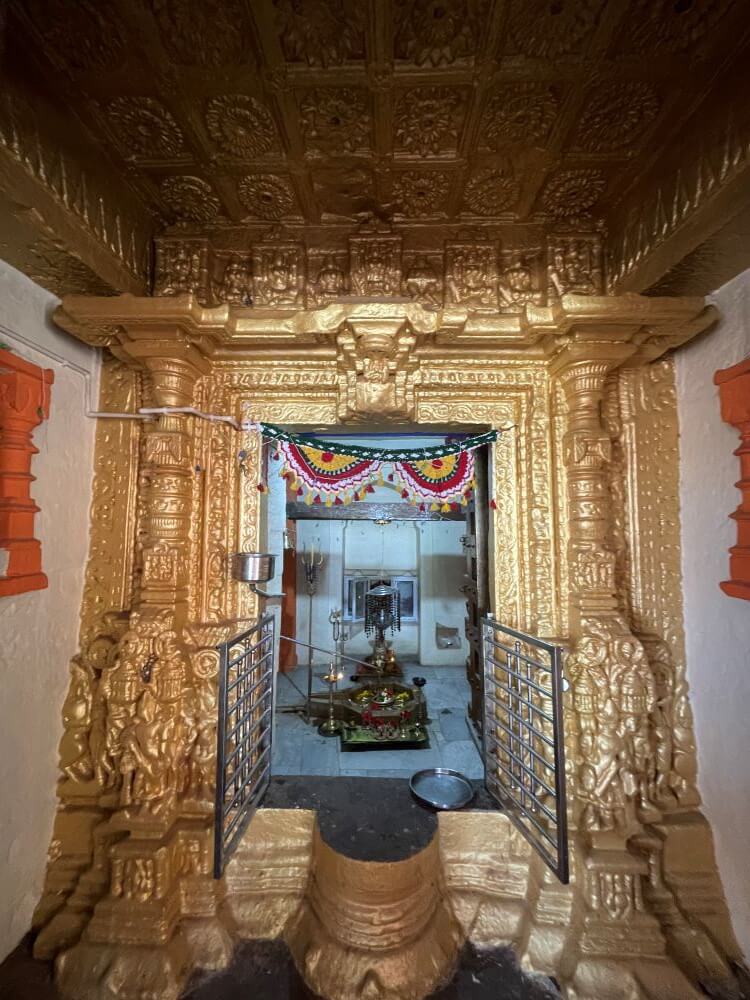 The Garbhagriha houses the self-manifested Shivaling covered by a serpent hood. A Galantika (pot) above continuously performs Abhishek on the lingam. Behind the lingam is a Shiva mask and an idol of Parvati in a niche.
The Garbhagriha houses the self-manifested Shivaling covered by a serpent hood. A Galantika (pot) above continuously performs Abhishek on the lingam. Behind the lingam is a Shiva mask and an idol of Parvati in a niche.
Nearby stands a small temple of Kashivishweshwar and a two-story Shani temple. In the lower sanctum on the first floor are statues of Moti Panauti above and Nani Panauti below, surrounded by red tiles. In the upper sanctum of Shani’s temple is an orange-colored statue of Shani adorned with a mask; there is also a gada (mace) near it. This temple is said to be unique as it houses combined shrines for Shani and his two wives together. Temples of Sankatmochan Hanuman, Nilkantheshwar Mahadev, and Rahu Dev are nearby.
Opposite Shani temple is a Kalbhairav temple housing two idols. The original Kalbhairav idol was installed by Nageshwar Chaitanya Maharaj Soman. Next to the idols is a chamber containing the sacred Padukas of Swami Samarth, with his image placed behind them, along with a picture of Soman Maharaj. A short distance away, near the Narmada ghats, lies the Swayambhu Lakshmi Yantra temple. Vishnupant Chaitanya Maharaj, a disciple of Gaurishankar Maharaj who spent his life performing Narmada Parikrama, discovered the Lakshmi Yantra in the river around 125 years ago. This temple houses a Lakshmi Yantra with an idol of Narmada Mata behind it.
It is customary to bathe in the river here and visit Kumbheshwar Mahadev and Shani Dev temples. Devotees immerse their clothes and footwear three times in the river, believing it reduces the adverse effects of Shani. Every Saturday, hundreds of devotees light sesame or mustard oil lamps in front of Shani Dev and chant prayers dedicated to him. Visiting and performing puja on Amavasya (new moon) is believed to bring prosperity, attracting large crowds. Saturdays in the Shravan month and Shani Jayanti see even larger gatherings for rituals and prayers.
